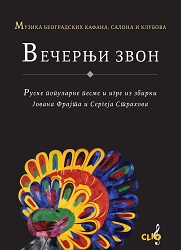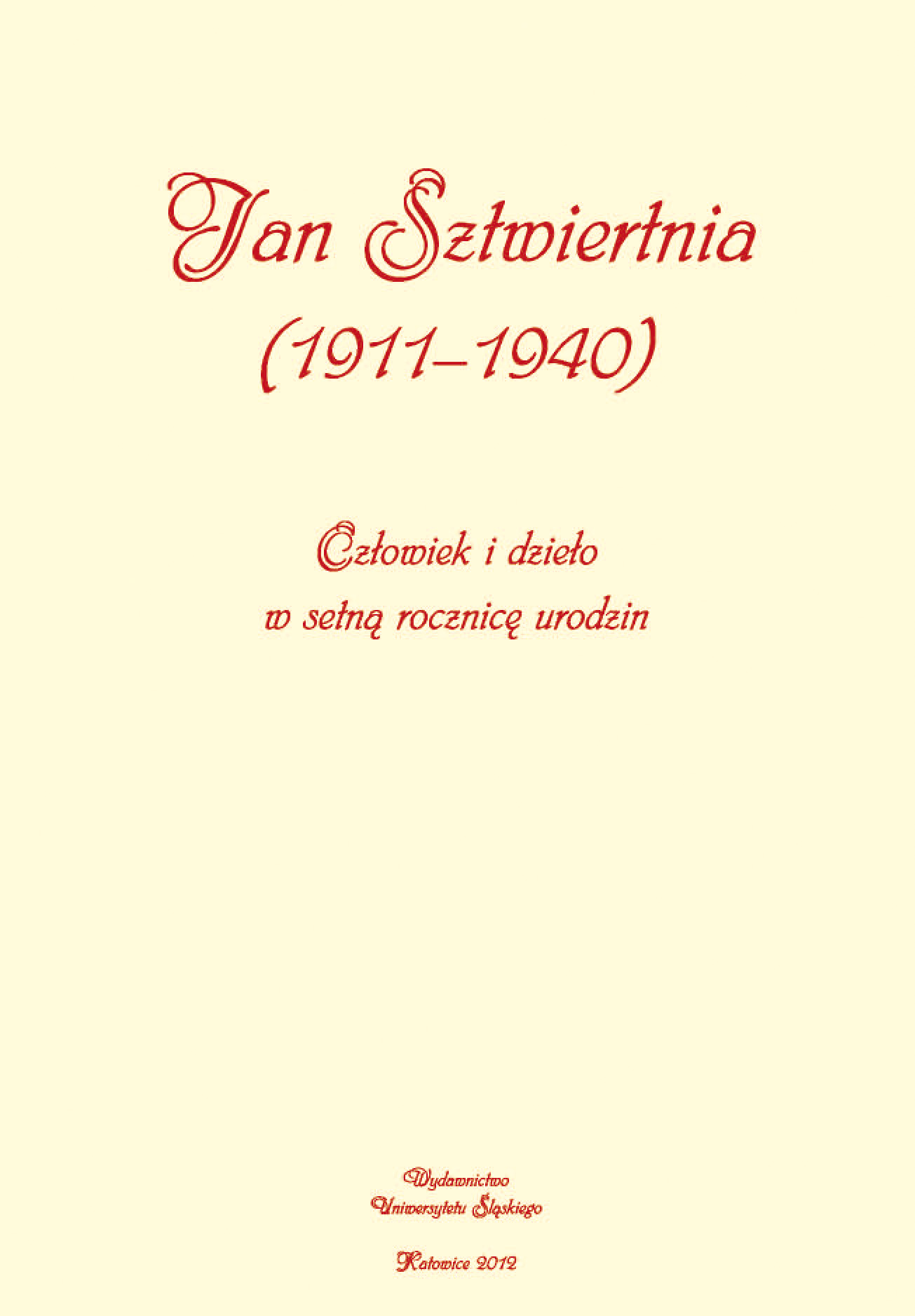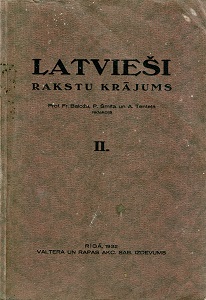
We kindly inform you that, as long as the subject affiliation of our 300.000+ articles is in progress, you might get unsufficient or no results on your third level or second level search. In this case, please broaden your search criteria.



Moderne igre koje između dva svetska rata osvajaju žitelje Beograda, pojavljuju se paralelno sa ulaskom džeza u muzički život ovog grada. Frajt je objavio oko sedamdeset modernih igara i to pretežno slovenskih autora. U drugoj svesci je reprezentativan izbor od 12 modernih igara sa tekstovima među kojima značajno mesto zauzimaju FrajtovaMona Vana, pesma i tango, sa tekstom Sergeja Strahova,”Tango erotikon” Leopolda Veslovskog, sa tekstom istog autora i ”Hajdemo u separe”, čarlston sa tekstom Slavka Piatonija.
More...
U prvoj svesci “Starogradske pesme” nalazi se izbor od deset najlepših i najpopularnijih starogradskih pesama između dva rata, među kojima posebno mesto zauzimaju”Kreće se lađa francuska”, “Tamo daleko” i ”Što se bore misli moje”.
More...
Posle Oktobarske revolucije brojni ruski umetnici emigrirali su u Kraljevinu SHS i doneli svoje narodne i zabavne pesme, koje su u srpskoj prestonici ubrzo postale veoma popularne. Srećna okolnost je bila ta da je u to vreme (od 1920.) u Beogradu već postojala velika i uticajna (najveća tada na Balkanu) izdavačka kuća Muzikalije Jovana Frajta, koja je u svoj projekat Narodna izdanja (Edition populaire) uvrstila objavljivanje te dragocene ruske, a uskoro i naše, muzičke baštine. Jovan Frajt (češki muzičar koji od 1903. živi i deluje u Beogradu kao violinista, dirigent, kompozitor i izdavač), vlasnik te izdavačke kuće, ostvaruje saradnju sa dvoje „naših“ Rusa koji su svoju umetničku karijeru izgradili u srpskoj prestonici ostavši joj verni do kraja svojih života, a to su: poznata interpretatorka ruskih i ciganskih romansi Olga Jančevecka (Brest-Litovsk,1890 – Beograd, 1978) i kompozitor i prevodilac Sergej Strahov (Moskva, 1901–Beograd,1945). U nevelik broj notnih izdanja ruskih narodnih pesama Frajt uključuje i rusku popularnu (zabavnu) muziku koju objavljuje uglavnom u vidu manjih albuma što je praktikovao i kada su bile posredi npr. makedonske, slovenačke ili dalmatinske narodne i popularne pesme. Frajt je već u prvoj godini (1920.) svog izdavaštva objavio dve ruske pesme i to u sopstvenom aranžmanu za glas i klavir: Hrizanteme i Oči čarne (EF33), a sledeće i romancu Vihažu (EF127). Najveći broj ruskih pesama Jovan Frajt je objavio 1935. godine (oko 17). Među njima su i dve najpoznatije: Crveni sarafan (EF 744) i Dve gitare (EF 744). Ova izdanja ruskih popularnih pesama za nas imaju istorijski značaj. Ona s jedne strane upotpunjuje sliku sveokupnog doprinosa ruskih emigranata na polju naše muzičke umetnosti između dva rata. S druge strane ona su pored domaćih izdanja američkih i nemačkihih autora popularne muzike bila treća dominantna, a specifična komponenta koja je uticala na formiranje i razvoj žanra popularne (šlagerske) muzike u Srbiji. U trećoj svesci iz serije Muzika beogradskih kafana, salona i klubova, naslovljenoj Večernji zvon sabrano je 37 ruskih narodnih i popularnih melodija.
More...
A book written by a singer, lyricist, composer, guitarist, one of the most important figures of Polish underground music. The publication perfectly reflects the atmosphere of the birth of punk and reggae in communist Poland and contains the portraits of top artists of this period.
More...
The second volume of correspondence of Fryderyk Chopin, richly illustrated with autographs of letters, including indexes, miscellanea, bibliography and biographical notes of the people related to the artist. It includes the correspondence from the composer’s youth and the time spent abroad after the fall of the November Uprising, until Chopin’s arrival in Paris in the early autumn of 1831, as well as his first regular summer stays in George Sand’s house in Nohant.
More...
The second volume of correspondence of Fryderyk Chopin, richly illustrated with autographs of letters, including indexes, miscellanea, bibliography and biographical notes of the people related to the artist. It includes the correspondence from the composer’s youth and the time spent abroad after the fall of the November Uprising, until Chopin’s arrival in Paris in the early autumn of 1831, as well as his first regular summer stays in George Sand’s house in Nohant.
More...


A portrayal of the fundamental issues of modern aesthetics of music related to the understanding of music as an art with autonomous artistic techniques. The author uses a systematical approach with a historical perspective, linking each topic to its origins and subsequent phases of development. He considers theoretical and aesthetic issues which had been shaping the modern musical discourse for three centuries, for example the concept of music as an analogy of verbal text, the evolution of aesthetic attitudes and the dilemma of the objectivity of judgements.
More...
I have always had in mind to write a book on numerous performable chords on the long-neck Tembûr which is known by various names in different parts of Kurdistan; it is known as Tembûr in the northern and western Kurdistan, it is known as Diwan in the eastern Kurdistan, and in the southern part of Kurdistan it is called Saz. However, the Turkish people use the word Baghlama to refer to the above mentioned instrument. Some years ago, I strove to do something i n this field which culminated in writing a book and, due to some reasons, I refused to publish it. During the last two months, I aimed at editing and adding some supplementary parts to it. Moreover, ten Kurdish songs along with displaying their chords have been pieced together. It should be noted that the book does not include the entire Diwan chords because I have attempted to write those chords that are more used in this instrument. I hope this book will be used by art lovers and Diwan players to enable them to improve their playing techniques. I wish you enjoy playing them.
More...
The subject of this monograph is the issue of creative development of a pianist interpretation in chamber music, with the consideration of various transcriptions. In order to fully cover the subject, the author of the paper has tried to systematize the term transcription, as well as presented the pedigree of the selected musical pieces, which are parts of works of art, in the background of chamber musical pieces of their composers: J. Brahms and D. Shostakovich. This monograph also covered the area of knowledge about the relationship between the evolution of chamber music with the accompaniment of piano and the development of the piano sound at the turn of the 18th and 19th centuries. The aspect, which was undertaken in this study - the pianist interpretation in regard to the changing performance medium in the musical piece - was presented on the sample of substantial transcription, using selected elements of the musical work: dynamics, articulation, agogic and some elements of musical expressions. The analysis of the discussed issue was presented on the basis of stylistically diverse musical pieces: Sonata in E-flat major, op. 120 No. 2 for clarinet and piano and its transcription for viola and piano, as well as the transcription for violin and historical piano, and Sonata in D minor op. 40 by D. Shostakovich for cello and piano and its transcription for double bass and piano by James Rapport. Due to the need to show the creative role of the pianist in regard to the performance and sound opportunities of the instruments, which co-interpret the chamber musical piece, selections were made within instrumental duets with the participation of both string and wind instruments. The type of the substantial transcription was used in this work as a means to show the factors contributing to the individualization of the piano playing in chamber music and to present its different face depending on the characteristics of the chosen instrument of the co-interpreter.
More...





The text presents the interview with the pianist Jakub Kamiński conducted by a group of first grade students of Italian Studies. The musician talks about his professional path, inspirations, didactic work and shares the memories from his concerts. The interviewed is translated to Italian and English.
More...